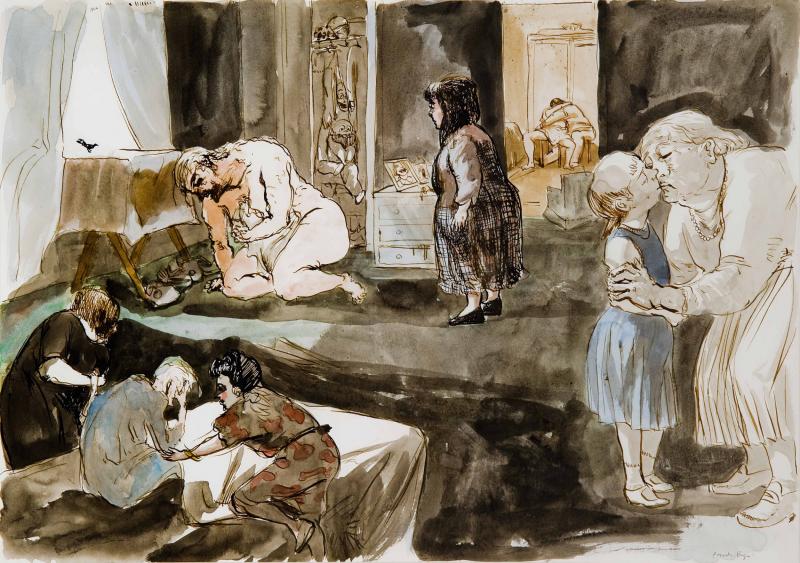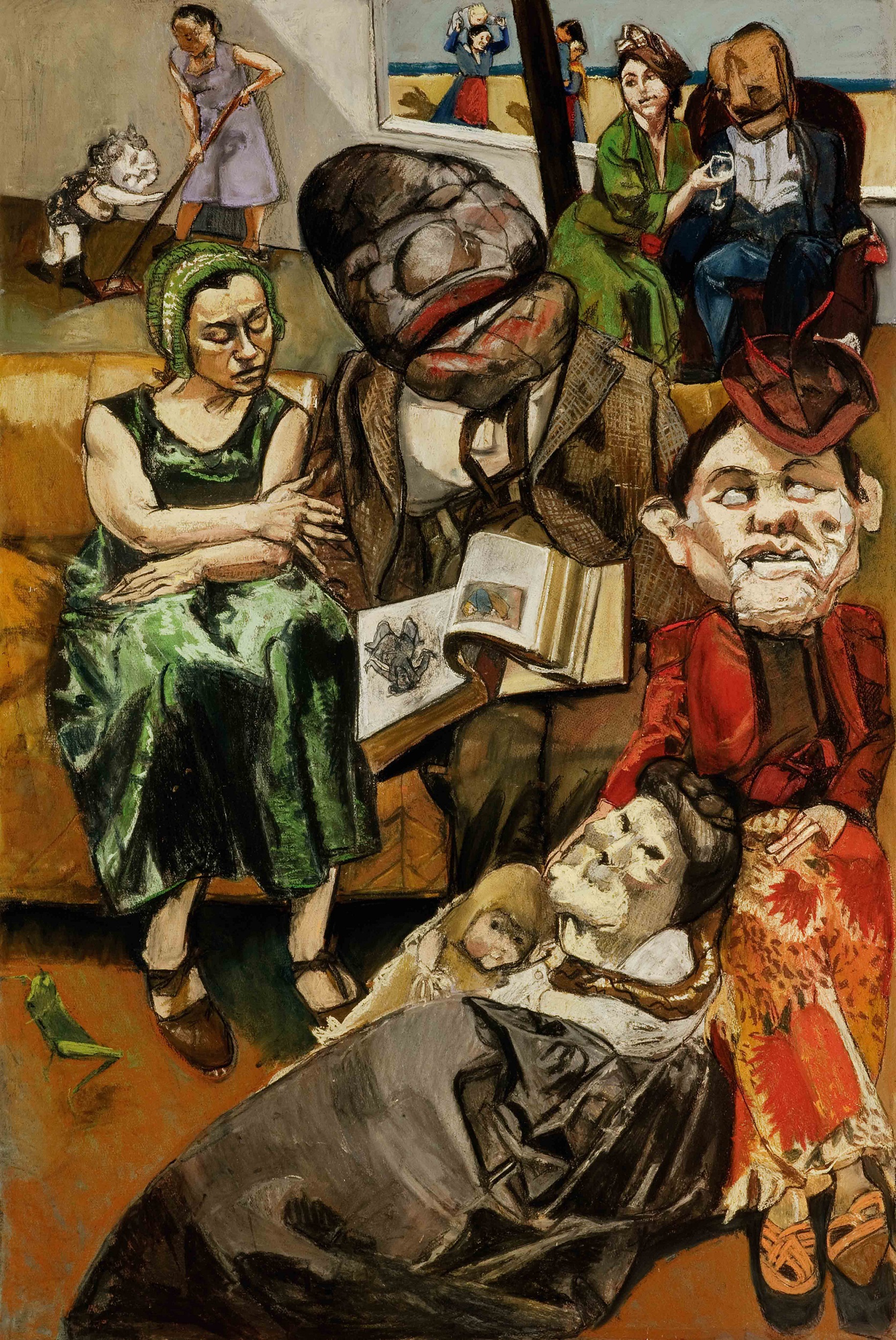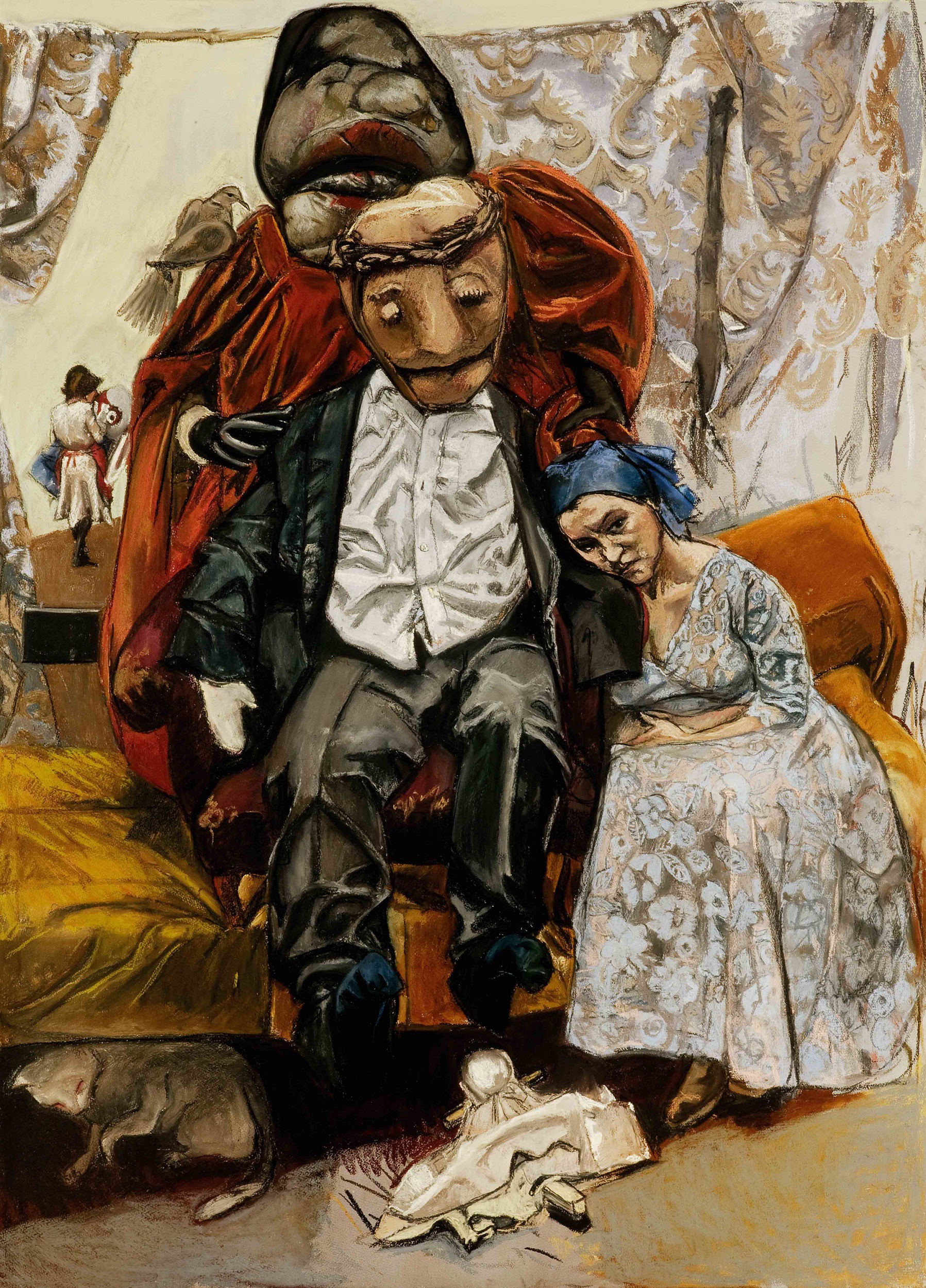Paula Rego: The Forgotten, Victoria Miro review - relentless focus | reviews, news & interviews
Paula Rego: The Forgotten, Victoria Miro review - relentless focus
Paula Rego: The Forgotten, Victoria Miro review - relentless focus
A selection of later work is more than a coda to Tate's recent retrospective

It might be said that Paula Rego’s subject is light: but rather than painting it, she gives it. She paints deep into social corners, affording generous and often unnerving representation to worlds forgotten or forced out of sight. This isn’t always a comfortable experience, and her figures are frequently refracted or distorted, bent out of shape in a desperate need to be seen.
The same relentless focus can now be found in The Forgotten, a recollection of Rego’s work from the past 20 years which fills in some of the blanks left by the recent Tate Britain retrospective, with the former featuring works painted post-2009 (the end of the Tate show’s remit). But The Forgotten is more than a coda. For a start, it occupies the whole of Islington’s Victoria Miro gallery, making deft use of the gallery’s jarring architecture, its semi-hidden stairways, shadow-rich niches, and industrial resonance. It offers a place in which to step, with unsure tread, around Rego’s labyrinthine mind, with her recurrent themes – mental illness, familial discord, sexual and social violence – masterfully displayed and, as ever, difficult to look at. This is Rego’s art: to painfully – and sometimes tenderly – foreground those facts we prefer to keep at arm's length.
 On entering the gallery (through an easy-to-miss door), we encounter three large and daunting portraits drawn from memories of Rego’s childhood. They depict – as well as fishing trips and readings of Dante’s Commedia – a tale of folie en famille, scenes of her father’s depression that Rego considers her inheritance (pictured right: Reading the Divine Comedy by Dante, 2005). Both father and mother veer away from human form, appearing hauntingly puppet-like – oversized dolls awkwardly posed in a weird inversion of childishness. But, in the central painting entitled La Marafona, 2005 (pictured below left), the eye might be equally drawn to the father’s feet, as much as the lolling doll’s head. They arch uncannily, toes curled – perhaps wracked with cramp like Rodin’s Mains crispée gauche – as though simply being held in frame is a painful extremity. Here Rego surreally pictures not only the difficulty of looking, but the pressure of being seen. The family is glaringly unsure of how to appear, though Rego’s head resting on her father’s arm provides a careworn sense of understanding.
On entering the gallery (through an easy-to-miss door), we encounter three large and daunting portraits drawn from memories of Rego’s childhood. They depict – as well as fishing trips and readings of Dante’s Commedia – a tale of folie en famille, scenes of her father’s depression that Rego considers her inheritance (pictured right: Reading the Divine Comedy by Dante, 2005). Both father and mother veer away from human form, appearing hauntingly puppet-like – oversized dolls awkwardly posed in a weird inversion of childishness. But, in the central painting entitled La Marafona, 2005 (pictured below left), the eye might be equally drawn to the father’s feet, as much as the lolling doll’s head. They arch uncannily, toes curled – perhaps wracked with cramp like Rodin’s Mains crispée gauche – as though simply being held in frame is a painful extremity. Here Rego surreally pictures not only the difficulty of looking, but the pressure of being seen. The family is glaringly unsure of how to appear, though Rego’s head resting on her father’s arm provides a careworn sense of understanding.
The floor directly above houses paintings of a similar subject, but under a crucially different aspect. Depression Series, 2007, is less surreal, less darkly comic, and perhaps therefore more simply moving. They are portraits by a gentler hand. Each painting, compared to the works positioned now under your feet, is disturbingly muted, displaying – almost invariably – the figure (sitting, prone, or supine) soundlessly struggling to get up in blunt streaks of lightly-then-heavily daubed pastel. Overpainting these scenes of deepest inertia with further tragic force is their history: Rego kept them from public view (locked in a drawer) for ten years, feeling – in her word from a video made to accompany the exhibition – "ashamed" of what they show.

Having walked through the gallery’s garden and up a second set of stairs to Gallery 2, the viewer – perhaps a little breathless – will encounter another perspective-shift. On this more brightly lit floor is 2001’s Misericordia (main picture): frames crowded with disparate bodies, comforting and embracing each other, or else merely staring. They reveal old age in all its discomforts (specifically they show Rego’s mother in failing health), as well as delicately detailing the loving sadness felt at a life’s end. To the right hang a suite of self-portraits which might be, at first glance, the most unassuming pieces in the exhibition. Made in 2017 after Rego had suffered a fall and damaged her face, they become fraught mirrors: the mouth, variously distorted, howls silently or grits its teeth; her body, in one instance, is reduced to a fading line; the face, Bacon-like, is shocked by its own reflection.
But it is the gaps in these self-seeings, their fallings-away and self-erasures that constitute her most revealing work. Rego’s reality is total, so it comprises social embarrassment, stigma, and taboo; but also blankness and lacunae, remorselessly re-encountering those moments of doubt and absence that make up a complete person. Because of this, truly seeing yourself is one of life’s most difficult revelations, but within Rego’s generous art, we can catch the briefest glimpse of it.
rating
Explore topics
Share this article
more Visual arts
 Expressionists: Kandinsky, Münter and the Blue Rider, Tate Modern review - a missed opportunity
Wonderful paintings, but only half the story
Expressionists: Kandinsky, Münter and the Blue Rider, Tate Modern review - a missed opportunity
Wonderful paintings, but only half the story
 Eye to Eye: Homage to Ernst Scheidegger, MASI Lugano review - era-defining artist portraits
One of Switzerland's greatest photographers celebrated with a major retrospective
Eye to Eye: Homage to Ernst Scheidegger, MASI Lugano review - era-defining artist portraits
One of Switzerland's greatest photographers celebrated with a major retrospective
 Stephen review - a breathtakingly good first feature by a multi-media artist
Melanie Manchot's debut is strikingly intelligent and compelling
Stephen review - a breathtakingly good first feature by a multi-media artist
Melanie Manchot's debut is strikingly intelligent and compelling
 Fantastic Machine review - photography's story from one camera to 45 billion
Love it or hate it, the photographic image has ensnared us all
Fantastic Machine review - photography's story from one camera to 45 billion
Love it or hate it, the photographic image has ensnared us all
 Yinka Shonibare: Suspended States, Serpentine Gallery review - pure delight
Weighty subject matter treated with the lightest of touch
Yinka Shonibare: Suspended States, Serpentine Gallery review - pure delight
Weighty subject matter treated with the lightest of touch
 Jane Harris: Ellipse, Frac Nouvelle-Aquitaine MÉCA, Bordeaux review - ovals to the fore
Persistence and conviction in the works of the late English painter
Jane Harris: Ellipse, Frac Nouvelle-Aquitaine MÉCA, Bordeaux review - ovals to the fore
Persistence and conviction in the works of the late English painter
 Sargent and Fashion, Tate Britain review - portraiture as a performance
London’s elite posing dressed up to the nines
Sargent and Fashion, Tate Britain review - portraiture as a performance
London’s elite posing dressed up to the nines
 Zineb Sedira: Dreams Have No Titles, Whitechapel Gallery review - a disorientating mix of fact and fiction
An exhibition that begs the question 'What and where is home?'
Zineb Sedira: Dreams Have No Titles, Whitechapel Gallery review - a disorientating mix of fact and fiction
An exhibition that begs the question 'What and where is home?'
 Yoko Ono: Music of the Mind, Tate Modern review - a fitting celebration of the early years
Acknowledgement as a major avant garde artist comes at 90
Yoko Ono: Music of the Mind, Tate Modern review - a fitting celebration of the early years
Acknowledgement as a major avant garde artist comes at 90
 Unravel: The Power and Politics of Textiles in Art, Barbican review - the fabric of dissent
An ambitious exploration of a neglected medium
Unravel: The Power and Politics of Textiles in Art, Barbican review - the fabric of dissent
An ambitious exploration of a neglected medium
 When Forms Come Alive, Hayward Gallery review - how to reduce good art to family fun
Seriously good sculptures presented as little more than playthings or jokes
When Forms Come Alive, Hayward Gallery review - how to reduce good art to family fun
Seriously good sculptures presented as little more than playthings or jokes
 Entangled Pasts 1768-now, Royal Academy review - an institution exploring its racist past
After a long, slow journey from invisibility to agency, black people finally get a look in
Entangled Pasts 1768-now, Royal Academy review - an institution exploring its racist past
After a long, slow journey from invisibility to agency, black people finally get a look in

Add comment